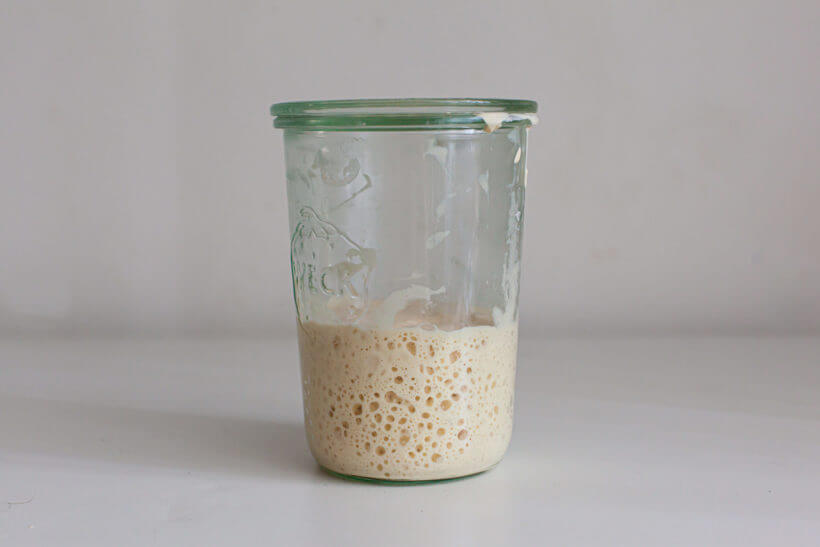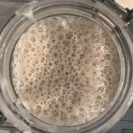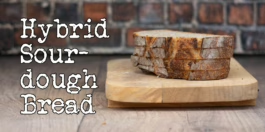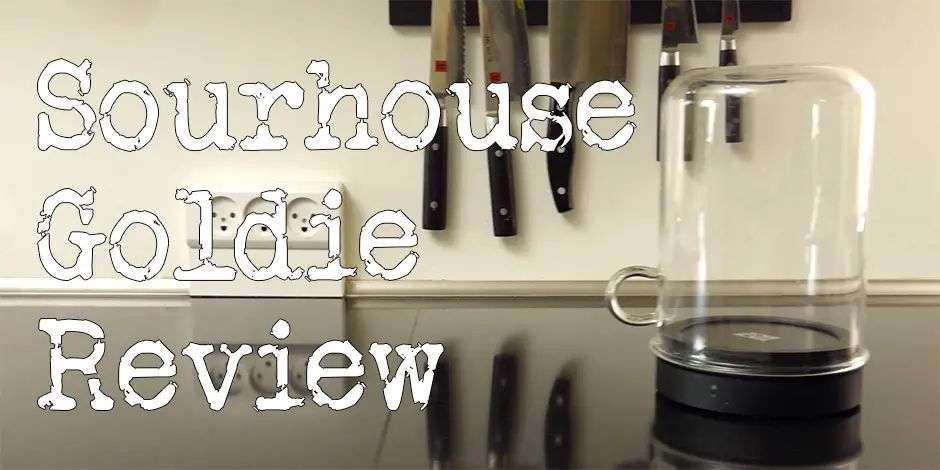If you love fantastic bread and baked goods, a sourdough starter is a great tool in your baking arsenal. Learn how easy it is to make your own by following this recipe.
A sourdough starter is not difficult to make. All you need is time and a little bit of consistency. It’s the baking world’s answer to a green thumb.
Set off a specific time of day when you check and feed your sourdough starter. It does not matter when you do it as long as it fits your daily schedule. It’s just important that you don’t forget it.
Got questions?
I’ve collected a list of frequently asked questions when you are
building your sourdough starter. Read them all here.
Ode to my starter
Starter, oh, starter,
how I love thee.
Each time I feed you,
you grow by three.
You make the best bread,
with salt, water and flour
The tastiest loaves,
which, with glee, I devour
How do I keep it alive?
When your sourdough starter is ready, you need to keep it alive. If you bake often, I recommend keeping it outside the fridge so it is always ready to be baked. Keep feeding it once a day, as you’ve done so far.

If it seems less active or your kitchen is cold, maybe you will want to feed it every day.
If you are only baking once a week, you can keep it in the fridge during the week. If you want to bake on Saturday, you can “wake it up” on Friday morning by taking it out and feeding it. Leave it on the counter. Feed it again in the evening; it should be ready to bake on Saturday morning.
So what? How do I use this sourdough starter recipe?
When your sourdough starter is active, you can start baking using it. I’ve made a guide and recipe, which is a fantastic place to start when you want to bake sourdough bread. So have a look at that!

It’s that easy. Follow this sourdough starter recipe to get started. If you have any problems, you can contact me.
Please share on social media
If you find this recipe useful, please help me and share it with your friends and followers. That would make me very happy.

Sourdough starter
Equipment
Ingredients
Instructions
- Start by putting 100 grams of rye flour and 150 grams of water in a glass container.
- Mix thoroughly so all the flour is hydrated.
- Put somewhere warm the next day (in a window in the sun or near a heater)
- Then follow the routine beneath until you have an active sourdough starter. You know it is active when it grows to at least double size over four to eight hours after the feeding.
Daily feedings
- Mix the sourdough starter
- Measure out 50 grams of sourdough starter in a fresh, clean glass container
- The leftover sourdough starter should be thrown out; at this point, it may contain bacteria that you don't want to eat.
- Add 100 grams of bread flour and 100 grams of water and mix thoroughly. Close the container. You can seal it if you want. Store somewhere warm (about 25°C/77°F)
- Repeat every day until your sourdough starter is bubbly and grows predictably. Normally it takes six to seven days
Video
Noter
- Every day when you are about to feed the starter, you might see a brownish liquid on the top of it. Just stir it back in.
- The starter should smell sour, it doesn’t mean it has gone bad.
- Any mold or mildew on top of the starter means it has gone bad. There is no way to save it.
Frequently asked questions (FAQ)
The reason you need to start the sourdough starter with rye flour is that there is more “food” for the yeast to eat. You can substitute with whole-wheat flour or bread flour if you don’t have rye. It may take longer for your starter to get active though.
It is very common that the starter will seem dead after a couple of days. Don’t get discouraged. Just keep the schedule. Feed every day.
An incredibly important factor in starting a sourdough starter is temperature. If your kitchen is around 20°C/68°F it will slow down the process significantly.
The starter works best between 25°C/77°F to 28°C/82°F. So put it somewhere warm. On top of the fridge or in a window with sunlight are good choices. If you have an oven where you can turn on the light without turning on the oven, that could be an option too.
Yes, it won’t hinder the growth as long as you open the glass every day (which if you follow the recipe you will do).
My starter was made with the glass jar sealed, but if it worries you, put the lid on top without sealing.
No, you have to constantly feed it to get it started. You can start putting it into the fridge after it grows every time you feed it. That should be after the “dead period” mentioned above.









